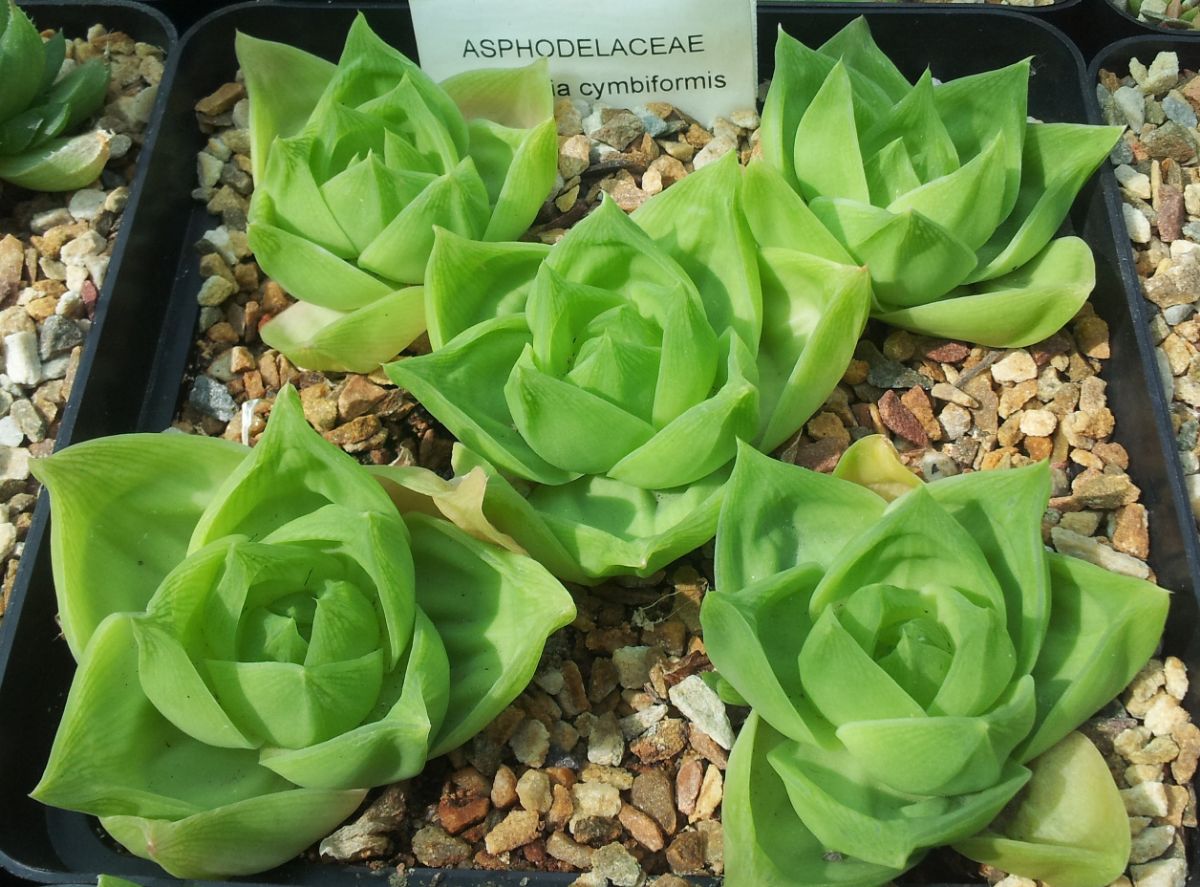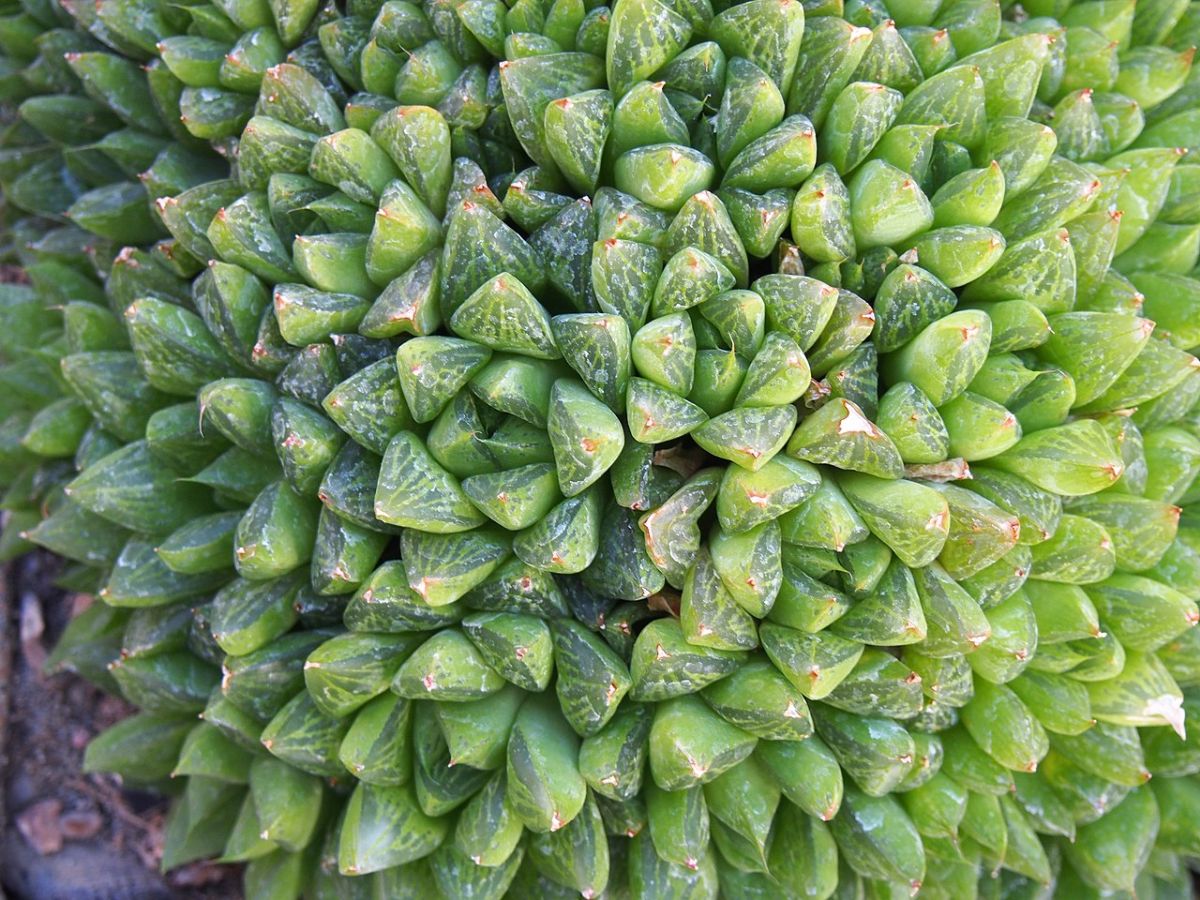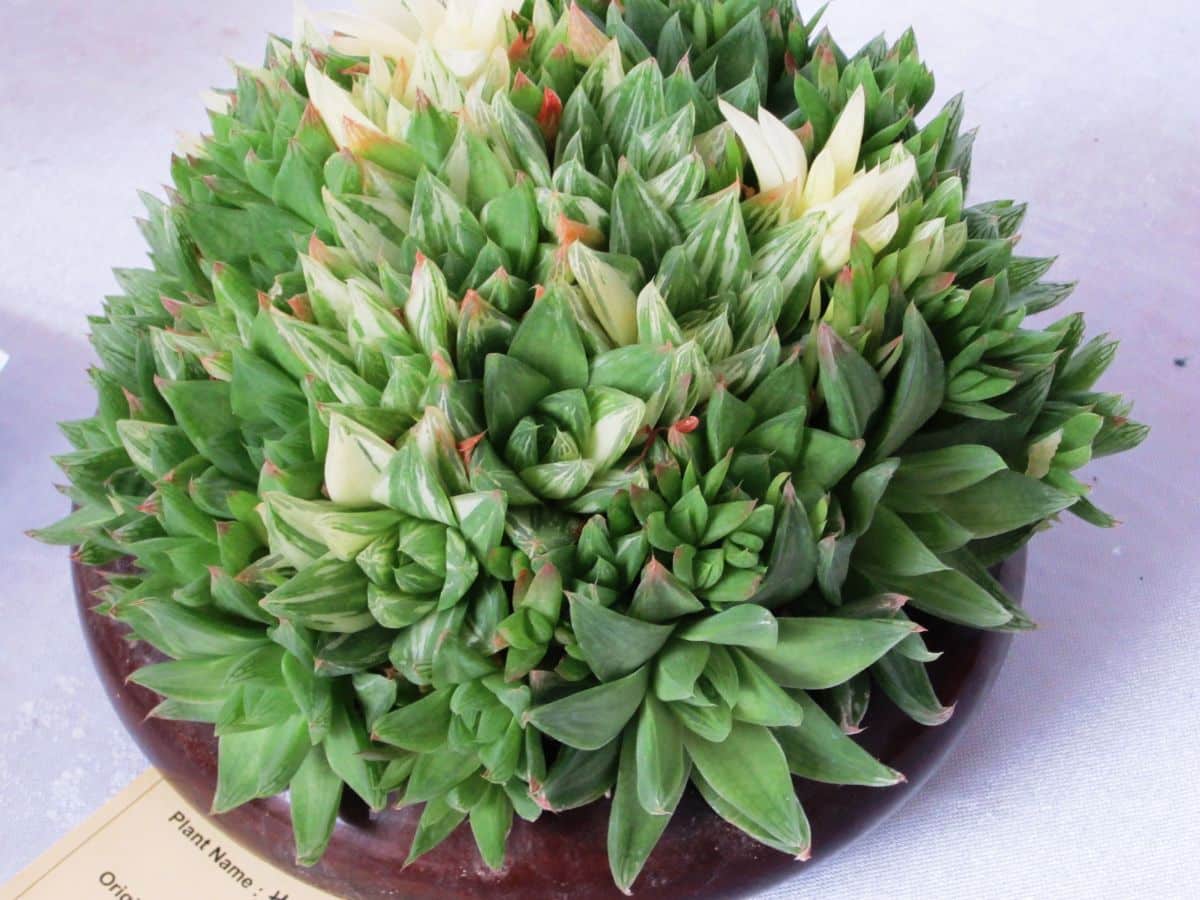
If you are a great lover of succulents, surely you have some at home. One in particular may catch your eye. Is it perhaps Haworthia cymbiformis? Its care is very easy and also, due to its resistance and beauty, it is often given away a lot.
But How is it? What care does Haworthia cymbiformis need? Then we reveal everything to you so that you do not have a problem with it.
How is Haworthia cymbiformis

Before going on to comment on each and every one of the care that this succulent will require, it is good that you know what it is like so that you can recognize it when buying it or even if you have it in your garden.
To begin with, Haworthia cymbiformis is native to South Africa and its name Haworthia is due to its discoverer. On the other hand, cymbiformis means "boat-shaped".
This succulent is not too big. It forms rosettes made up of very fleshy green to pale green leaves, some even with transparent tips. But the characteristic of this plant is that it hardly has roots, in fact, it develops them superficially because in its natural habitat it is almost unearthed.
You can reach 8-10 cm in diameter, but not much else.
As for its flowers, because yes, it blooms, you should know that these are going to be of two colors, either pink or white. They will have small green-brown veins and these will grow considerably larger than the plant itself (we are talking about 15-20cm long).
Haworthia cymbiformis care

Now yes, do you want to have this succulent at home and make it last a long time? So here you have a guide with all the care of the Haworthia cymbiformis so that it does not resist you.
Lighting and location
The first thing you should know about Haworthia cymbiformis is that it needs to have many hours of light. The more you give, the better. Now, it also adapts to semi-shade sites.
With this we want to tell you that if you can put it outside much better than inside. In case you want it at home, then look for the window where it gets the most sun during the day and place it there so that it can benefit from the greatest amount of light.
As succulent as it is, can withstand direct sun and, although you can have the leaves of this one somewhat burned at the tips (by the sun), it does not negatively affect its health. In case it is too much, if you have it in a pot, moving it to a more shady place will be enough.
Temperature
As we have told you before, Haworthia cymbiformis is native to South Africa, and that means that tolerates both hot and dry weather very well. As for temperatures, with extreme heat you will not have any problem. But with the coldest yes. It's not that you can't leave it out, actually up to 0 degrees you don't have to worry, but if there are usually frosts where you live, then yes, because they do not tolerate them.
Substratum
As a succulent, it needs a soil with good drainage because it needs the soil not to be flooded or with a lot of water (it is harmful to it and can end up rotting it).
You can use soil for cacti and succulents although we recommend adding a little more perlite to improve the drainage of this and thus make sure that it is well.
Irrigation
For the irrigation of the Haworthia cymbiformis you must take into account that it needs a lot of water, but you really should water it very little. What does this mean? You see, when it comes to watering, you have to make sure that, when you do, you have more than enough water (that is, abundant watering) but not too often.
The reason for this is that the leaves of Haworthia cymbiformis store water and they are the ones that can give you the key on whether to water or not. For them to be good, you must see them fleshy and rounded. If you see them thin and sharp, then they do not have enough water storage and you have to water them.
To give you an idea, there are some that water them every 15-20 days. But it is not something that you should always follow because everything will depend on the climate you have in your house or in the garden.
So how to do it? Try the following at first:
- In winter: water only if you see dry soil.
- In spring: water every 15 days.
- In summer: once a week.
From there, which would be the basics, you will have to adapt it to your climate and to what the plant needs (it can be more or less).
Keep in mind that Haworthia cymbiformis prefers to go through periods of drought before you water it too much.
Subscriber
Although succulents do not need fertilizer, in the case of Haworthia cymbiformis it does appreciate it very much, especially when it is growing. But not much either; actually if the pay a little every 3 months will be more than enough. That yes, use only half of what the manufacturer gives you and always in the months of growth, in the others let them rest.

Pruning
Succulents are not usually pruned although, when they bloom and they no longer exist, it would be convenient cut that flower stem so that it does not make the plant ugly or steal energy.
Plagues and diseases
Although all succulents are very resistant, the truth is that there are pests that can affect it. In the case of Haworthia cymbiformis, these would be the mealybugs, aphids and mites. You also have to be careful with slugs and snails.
All this can be treated if you catch it in time with a specific product.
Also, in terms of diseases, the most problematic will be the excess water that can cause the appearance of fungi.
Reproduction
Finally, if your plant is well cared for, you may want to reproduce it. In fact, Haworthia cymbiformis itself develops suckers when healthy. These will be at the base of the plant and you would just have to cut them off and plant them in another pot. Of course, before putting them on, let them dry for about 3 days to seal that wound. In a matter of 15 days you will already have them active.
Alternatively by seed, although it is not the most common.
What you should keep in mind is that it is said that Haworthia cymbiformis does not last long because each season it loses a part of its roots and reaches a point where it completely rots. Hence, it is important to remove suckers or shoots from it.
Do you have any questions about the care of Haworthia cymbiformis?